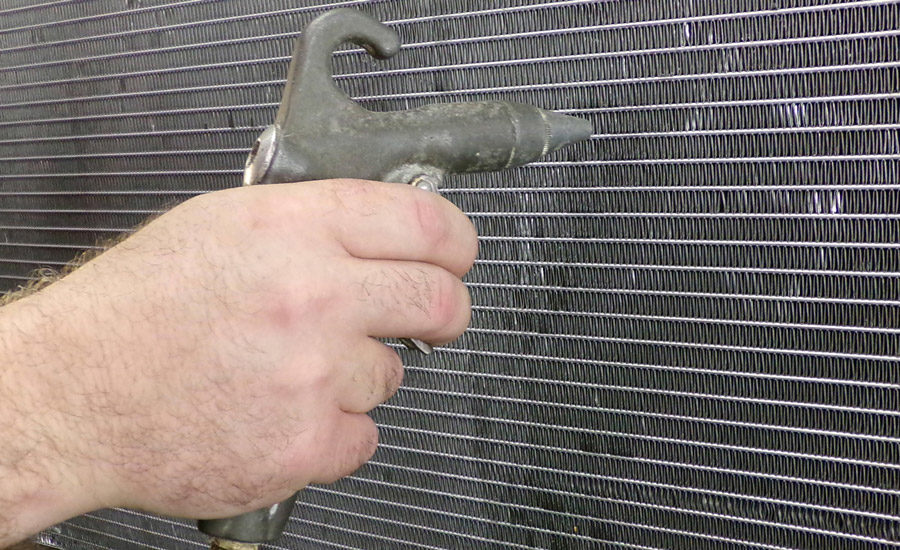Maintenance Tips for Longevity of Microchannel Heat Exchangers

Microchannel heat exchangers (MCHEs) are known for their efficiency and compact design, making them a popular choice in various applications. However, to ensure their optimal performance and longevity, regular maintenance is crucial. Proper care of microchannel coil can significantly extend the life of these vital components. This article provides essential maintenance tips for maintaining the longevity of microchannel heat exchangers.
Regular Inspection and Cleaning
One of the most important maintenance practices is regular inspection and cleaning of the microchannel coils. Over time, dust, dirt, and debris can accumulate on the coils, impeding airflow and reducing heat transfer efficiency. To prevent this, schedule routine inspections and cleanings.
- Visual Inspection: Conduct a visual inspection of the microchannel coils at least quarterly. Look for signs of dirt buildup, corrosion, or physical damage.
- Cleaning: Use a soft brush or low-pressure air to remove loose dirt and debris. For more thorough cleaning, use a mild detergent solution and a soft cloth. Avoid high-pressure water jets, as they can damage the delicate microchannels.
Protect Against Corrosion
Corrosion is a significant threat to the longevity of microchannel heat exchangers. Preventive measures can help mitigate this risk and extend the life of your microchannel coils.
- Anti-Corrosion Coatings: Apply anti-corrosion coatings to the microchannel coils. These coatings provide a protective barrier against moisture and corrosive elements, enhancing the durability of the coils.
- Anodizing: Anodizing the aluminum coils can increase their resistance to corrosion and wear. This electrochemical process thickens the natural oxide layer on the aluminum, providing additional protection.
Monitor Refrigerant Levels
Maintaining the correct refrigerant levels is critical for the efficient operation of microchannel heat exchangers. Low refrigerant levels can lead to decreased performance and potential damage to the system.
- Regular Checks: Conduct regular checks of the refrigerant levels to ensure they are within the recommended range. If you notice a drop in refrigerant levels, investigate and repair any leaks promptly.
- Proper Recharging: When recharging the system, use the manufacturer-recommended refrigerant type and follow the correct procedures to avoid overcharging or undercharging.
Ensure Proper Airflow
Adequate airflow is essential for the efficient operation of microchannel heat exchangers. Blockages or restrictions can lead to overheating and reduced performance.
- Unobstructed Airflow: Ensure that there are no obstructions around the microchannel coils. Keep the area around the coils clear of debris, vegetation, and other potential blockages.
- Fan Maintenance: Regularly inspect and maintain the fans and blowers that facilitate airflow through the coils. Clean the fan blades and housings, and replace any damaged or worn components.
Routine Performance Monitoring
Regular monitoring of the performance of your microchannel heat exchanger can help identify potential issues before they become serious problems.
- Temperature Checks: Monitor the inlet and outlet temperatures of the microchannel coils. Significant deviations from the expected temperature range may indicate a problem with the heat exchanger.
- Pressure Monitoring: Check the pressure levels within the system regularly. Abnormal pressure readings can signal issues such as blockages or refrigerant leaks.
Address Leaks Promptly
Even minor leaks can lead to significant problems if left unaddressed. Regularly inspect the microchannel coils and connections for signs of leaks.
- Leak Detection: Use leak detection methods such as soap bubbles or electronic leak detectors to identify leaks. Pay particular attention to joints, connections, and areas prone to wear.
- Timely Repairs: Repair any detected leaks promptly to prevent refrigerant loss and potential damage to the system. Use appropriate sealants and follow the manufacturer’s guidelines for repairs.
Professional Maintenance
While routine maintenance can be performed by in-house personnel, it is advisable to schedule professional maintenance services periodically.
- Professional Inspections: Professional HVAC technicians can conduct thorough inspections and maintenance of microchannel heat exchangers. They have the expertise to identify and address issues that may not be apparent during routine checks.
- Advanced Cleaning Techniques: Professionals have access to specialized cleaning equipment and solutions that can effectively clean the microchannel coils without causing damage.
Conclusion
Maintaining the longevity of microchannel heat exchangers requires a proactive approach to inspection, cleaning, and performance monitoring. By following these maintenance tips, you can ensure that your microchannel coils operate efficiently and last longer, ultimately saving on repair and replacement costs. Regular care and attention will help you maximize the benefits of this advanced technology, ensuring reliable and efficient performance in your HVAC systems.

.jpeg?width=682&height=455&name=AdobeStock_295048993%20(1).jpeg)



